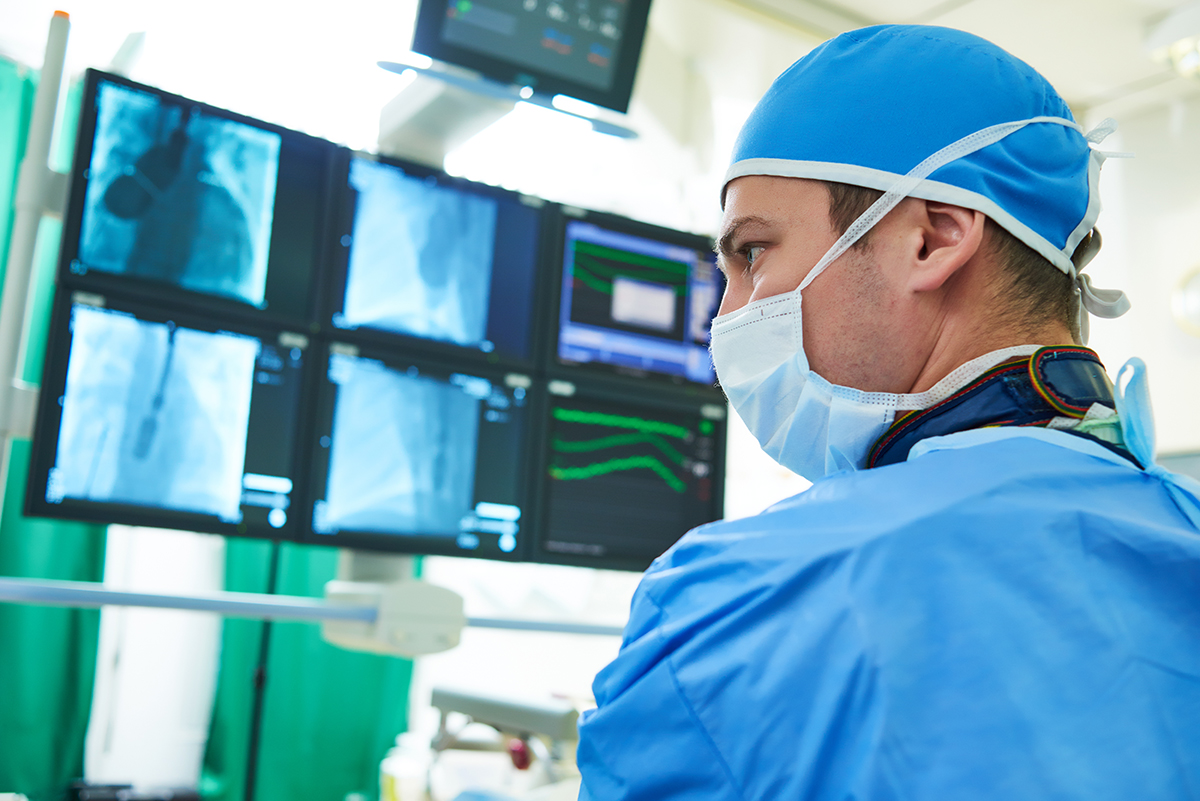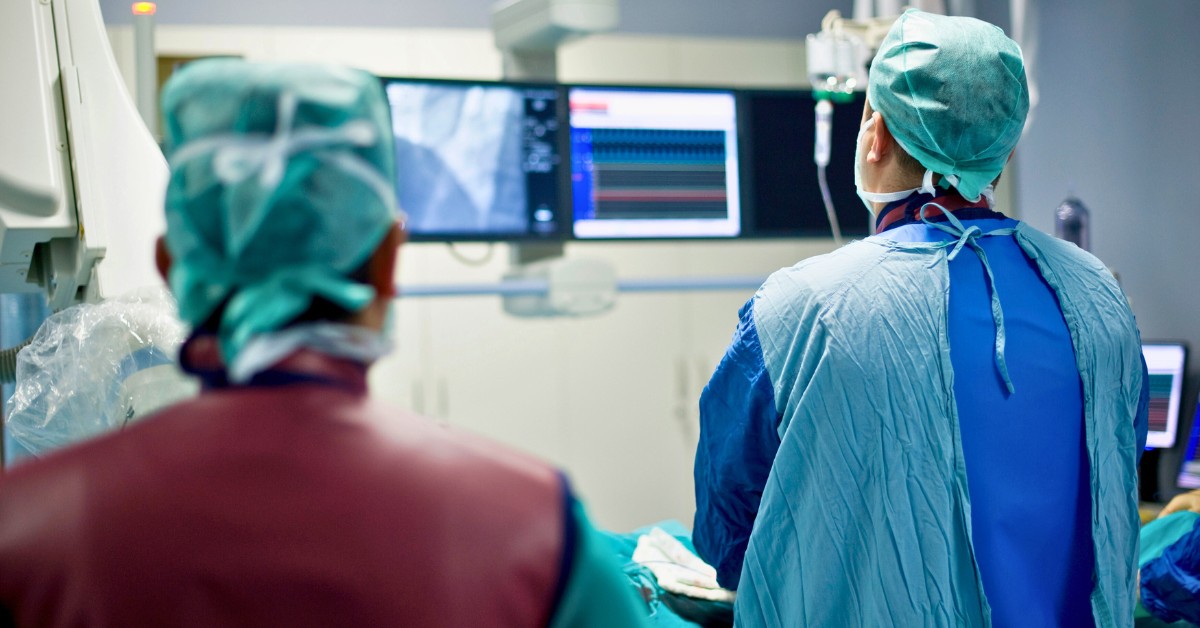
Managing radiation exposure in the Cath Lab
In the early days of interventional cardiology, there weren’t many ways to reduce the exposure to radiation felt by the team in the Cath Lab. Until recently, we hadn’t been able to thoroughly understand the impact on physicians and Cath Lab staff exposed to X-rays daily for the duration of their career. Our new-found understanding has sparked industry-wide discussion about radiation safety and calls for new methods of reducing exposure.
Beyond the incorporation of more advanced technology into the Cath Lab, several steps can be taken to reduce radiation exposure:
- Encourage everyone who can to take two steps back from their usual position at the table. This will cut radiation exposure in half.
- Be sure that the C-arm is properly placed in relation to the patient. To reduce scatter radiation, the X-ray generator should be placed under the table, as far from the patient as possible and the detector should be as close to the patient as possible. Bonus: following this best practice will also improve image quality!
- Reduce the frame rate on the imaging system. In recent years, 15 frames per second (FPS) has become a standard of sorts. However, according to a 2013 study, just a slight reduction to 10 FPS can reduce radiation dosage by 38%.
- Opt for supplemental imaging options like OCT, IVUS, and TEE to reduce dependence on X-ray during a procedure.
- If available, use the “fluoro save” feature found on many newer systems. This will allow the physician to save the last image and use that to navigate the procedure, instead of continually using X-ray imaging.
- Utilize electronic vessel road-mapping if your imaging system supports it to limit the need for contrast and X-ray use.
- Add lead drapes around the patient table to limit scatter radiation from underneath. Careful placement will allow for free movement of the C-arm while still providing protection.
- Extend the tubing on manual manifold contrast injectors so that the physician can stand further away from the table while injecting contrast for imaging.
As procedures become increasingly complex and longer in length, it is more important than ever to be mindful of the radiation exposure you encounter. Make an effort to stay informed as new methods of reducing exposure arise and take the initiative to incorporate them into the day-to-day use of your Cath Lab.
 company
company 
 (866) 755-7519
(866) 755-7519












